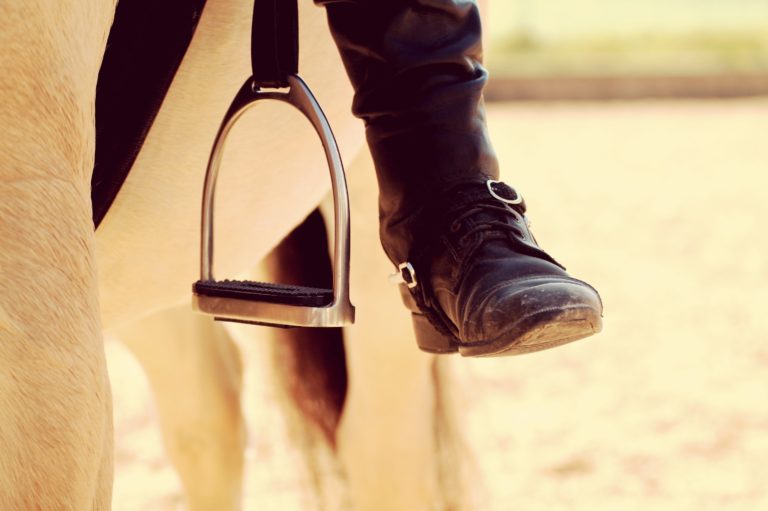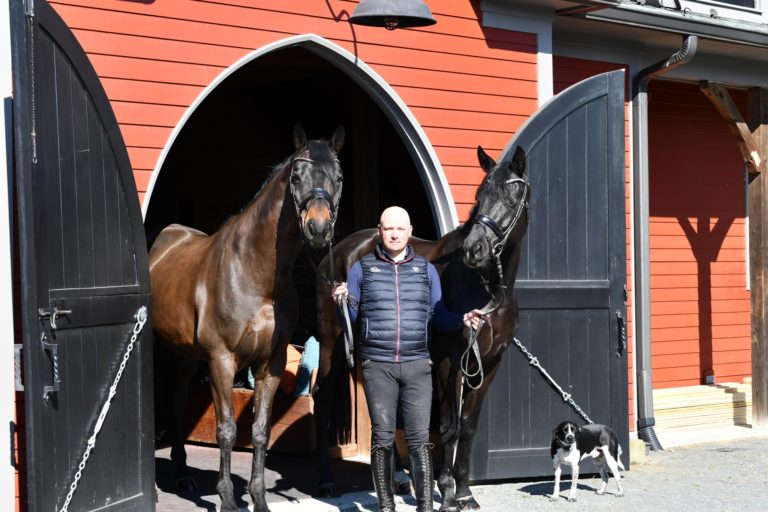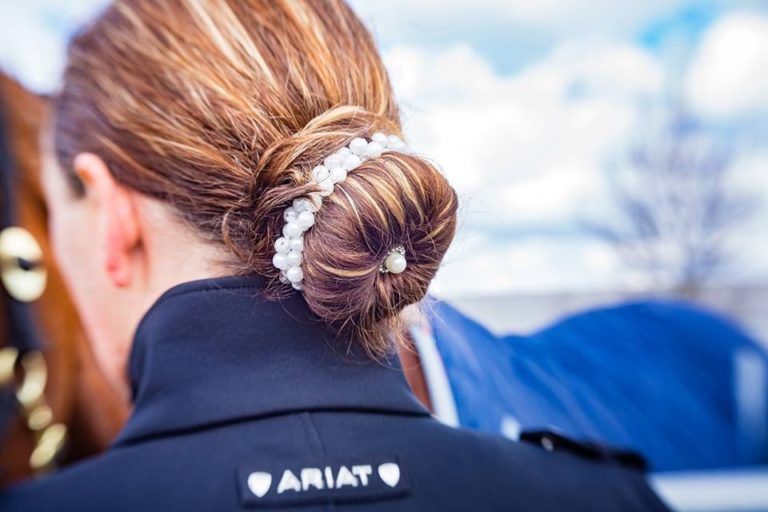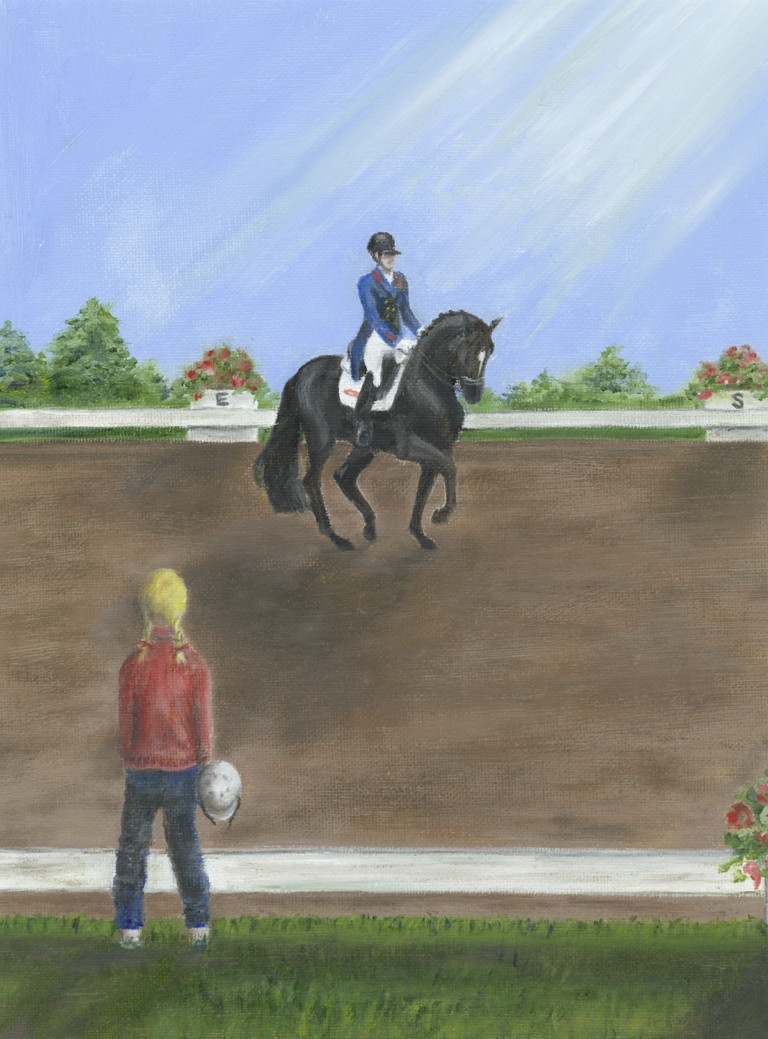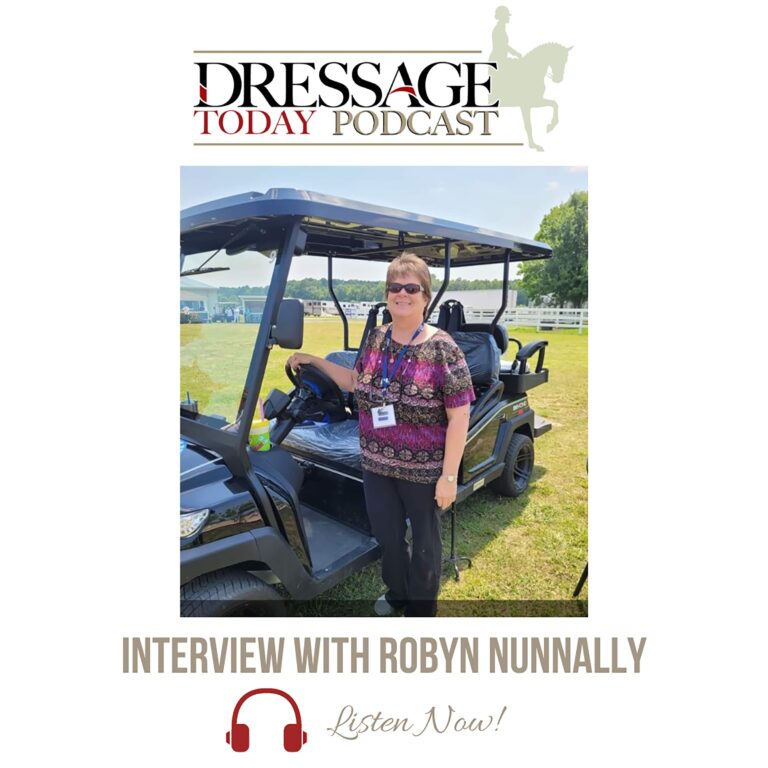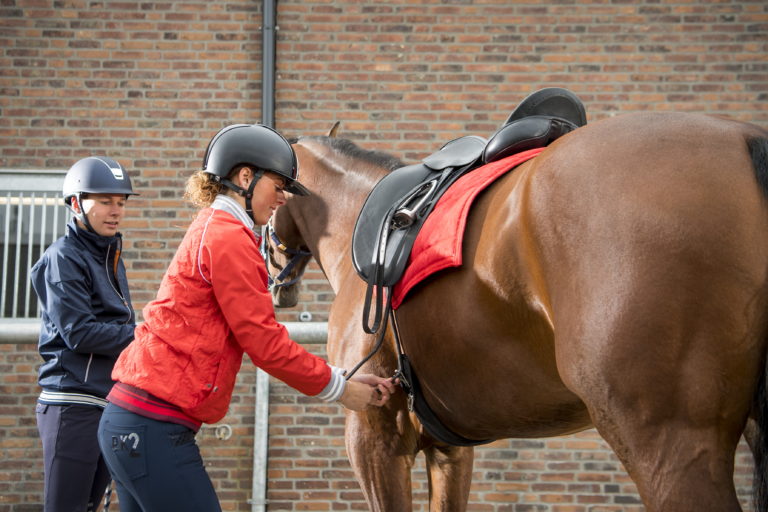Q: Articles about dressage confirm that if your position is correct on the horse, you will get honest movement. What is frustrating to me is that for the last 20 years I’ve been told not to grip, keep my heels down and my thighs relaxed, let the elbows go with the movement, hold with the stomach and relax the back. But when I am in the saddle, I don’t seem to remember any of this. Can you please explain what I can do to become a thinking rider? I have a wonderful gelding who likes his work and is good at it. All my friends have moved up in the levels, and here I am 20 years later wishing I could ride a First Level test. —Name withheld by request
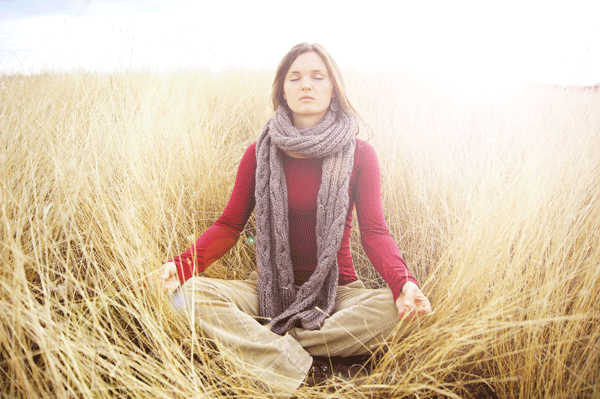
A:Becoming a thinking rider is a great goal. When I first started riding dressage, I would complain to my trainer that I needed six brains: one for each arm, each leg, my seat and my body. And to a certain technical and tactical extent, I was correct. There is good news though: You can integrate those six brains into the one you possess.
Use your muscle memory: When you perform a physical task over and over, your muscles build memory by creating neural pathways. It sounds complicated, but how this applies is rather easy. Physical tasks performed repeatedly can become rote and eventually you can complete them without much thought. Take driving and listening to the radio at the same time; you can typically do this without much mental effort. But if you think about the first time you drove, you could not have sung along to your favorite song because you needed all of your brainpower to concentrate. With practice and experience, driving requires less mental energy and is more comfortable.
This is part of the process in riding dressage. You can see this when your trainer gets on a horse. She can talk to you about what she is doing while she is doing it, float along effortlessly while you feel immense struggle and look as if she isn’t even trying. Some of this might be natural talent or ability, but much of it was created over all the years and countless rides, forming muscle memory and physical habits. When you have enough repetition, the physical flow becomes habit and requires less mental focus.
Visualize. It sounds like you have worked hard enough to create this type of muscle memory and neural pathways and you have had moments on your own and repeated experiences with your trainer helping you. The next part is to become a full owner of these feelings, physical habits, muscle memories and neural pathways. You can achieve this by practicing the physical movements mentally. This is called visualization, mental rehearsal or mental imagery in sport psychology. It is actually quite simple to do, it doesn’t require massive amounts of time and it can be used in every area of your life.
After you have a good ride with your trainer, take a few minutes to review the ride in your mind. I would recommend doing this the same day, within a few hours of the positive experience, if possible. You want to do this in a quiet place. Go over as much of your ride as you can in your mind; it’s not necessary to do the entire 45 minutes, just grab the highlights and best parts of it.
During the visualization, use all your senses. You want to reexperience the ride on several levels: visual, auditory, kinesthetic and olfactory. Visual is obviously how you saw things during the ride. Auditory is what you heard. Kinesthetic is what you felt, and olfactory is what you smelled or tasted.
You want to create as strong an experience as possible on as many of these levels as you can to create the most powerful image possible. What did you see besides the back of your horse’s head; what did the ring look like; what was your trainer wearing or where was she standing; who else was in the ring; what did you look like on your wonderful gelding? What noises did you hear besides your trainer’s voice? Did your horse make any sounds; what did the footfalls sound like; was there any noise coming from outside your riding arena? What did you feel when it felt great? Think of as many adjectives as possible to define this feeling so that it can become as duplicable as possible and not just a fluke. Some people have difficulty with smell or taste in an image, but it might add something. One thing horsepeople talk about is how wonderful horses smell. Did you notice any smells during the ride or get a taste in your mouth that was distinct to the ride?
If you can describe these feelings as completely as possible, then you can begin to own them. Then practice this ride mentally multiple times per day, every day you can. Go over what it feels, sounds, looks and smells like when you are connected to your horse. Focus intently on these feelings and how you created them physically. The next time you ride, call forth these images and work to re-create them each time. Mental imagery takes practice, like any other skill, so remember to be patient with yourself as you are learning.
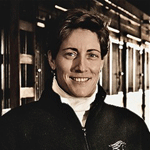
Jenny Susser, PhD, is a clinical sport psychologist for riders through the Olympic level. She rides dressage and lives in New York.


